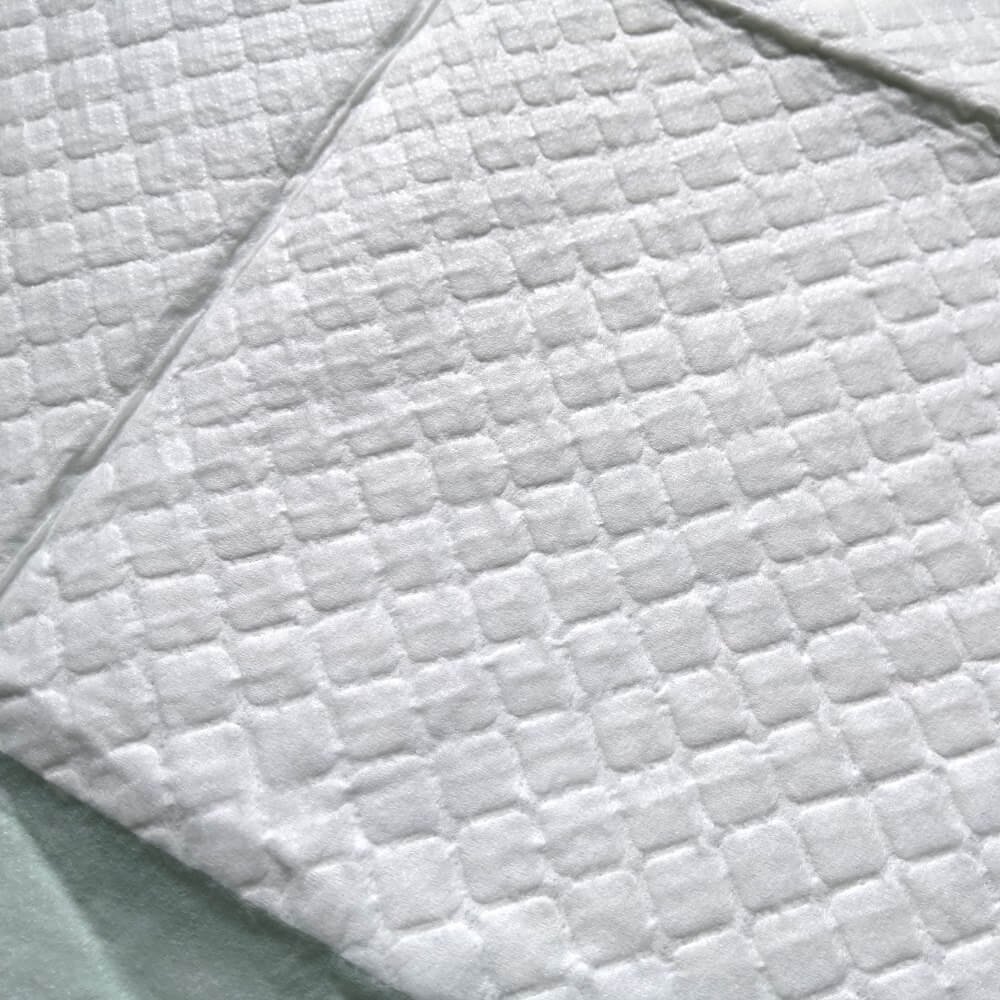When it comes to selecting underpads, choosing the right material is crucial for ensuring comfort, absorbency, and skin protection. Whether you’re dealing with incontinence, recovering from surgery, or simply need extra protection, the material used in underpads can make all the difference. This article will explore the key factors that should guide your decision-making process, offer insights into the most popular materials available, and explain how to choose the best option for your specific needs.
Understanding Underpads
What Are Underpads?
Underpads, also known as bed pads or absorbent pads, are specially designed products used to provide protection against leaks and to maintain hygiene. They are primarily used by individuals with incontinence or other medical conditions, but they are also a popular choice for use in healthcare settings, surgeries, or even by pet owners.
Typically, underpads are made from absorbent materials layered with a waterproof backing to prevent any leakage onto mattresses, chairs, or other surfaces. Their size can vary, but they are most commonly used on beds, chairs, or floors to absorb moisture.
Key Factors to Consider When Choosing Materials
Absorbency, Softness, and Durability
When selecting materials for underpads, three critical factors come into play: absorbency, softness, and durability. The material must be absorbent enough to handle moisture without leaking, comfortable against the skin, and durable enough to withstand repeated use.
Absorbency is especially important for people who experience frequent or heavy incontinence. Materials like super-absorbent polymers (SAP) are often used in underpads to increase moisture retention. Softness ensures that the pad is gentle against the skin, reducing irritation or chafing. Durability refers to how well the underpad performs over time, including how well it holds up after multiple uses or washes.
Popular Materials for Underpads
Overview of Common Materials Used for Underpads
There are a wide variety of materials used in underpads, each designed to meet specific needs and preferences. Some of the most common materials include:
- Polyethylene (PE): Known for its water-resistant properties, PE is often used in the backing layer of underpads to prevent leaks.
- Fluff pulp: A type of absorbent material often used in disposable underpads due to its ability to hold large amounts of liquid.
- Nonwoven fabric: This fabric is soft, breathable, and commonly used in the top layer to enhance comfort and reduce skin irritation.
- Super-absorbent polymers (SAP): These are used in the core of the pad to absorb moisture and prevent leaks.
Впитываемость
How Absorbency Affects Material Choice
Absorbency is arguably the most important factor when choosing materials for underpads. If the material doesn’t have high absorbency, it won’t provide adequate protection and can lead to leaks, discomfort, and skin irritation.
Super-absorbent polymers (SAP) are often used to increase absorbency in disposable underpads. These materials are highly effective at drawing moisture away from the skin and trapping it in the pad, preventing leakage. The more absorbent the material, the more comfortable and effective the underpad will be, especially for people who experience frequent incontinence.
Skin Protection
Importance of Skin-Friendly Materials
Another essential consideration is the impact of the material on the skin. Underpads are in direct contact with the body, often for extended periods, so skin protection is key. Materials that are rough or abrasive can lead to skin irritation, rashes, or even sores, particularly in individuals with sensitive skin.
For this reason, manufacturers often choose soft, breathable, and hypoallergenic materials for the top layer of underpads. Nonwoven fabrics, for example, are soft to the touch, and they allow air to circulate, reducing the risk of skin irritation. In addition, many underpads are treated with antibacterial properties to minimize the risk of infection.
Экологические соображения
Sustainable Materials for Underpads
With growing concerns about environmental sustainability, many consumers are opting for eco-friendly options when choosing materials for underpads. Reusable underpads, made from washable fabrics like cotton or bamboo, are increasingly popular for those looking to reduce waste. These materials can be reused many times, making them an eco-conscious alternative to disposable options.
For disposable underpads, some brands now use biodegradable materials, such as plant-based polymers, to reduce their environmental impact. It’s also worth noting that some underpads use recycled materials for their construction, further promoting sustainability.
Comparing Disposable and Reusable Underpads
Pros and Cons of Disposable vs. Reusable Underpads
When selecting materials for underpads, you must choose between disposable and reusable options. Both have their benefits and drawbacks.
- Disposable Underpads: These are convenient, hygienic, and easy to use. They are typically made from highly absorbent materials, such as fluff pulp and super-absorbent polymers, and are designed to be thrown away after use. However, they contribute to waste and can be more expensive in the long term.
- Reusable Underpads: Made from durable fabrics like cotton, bamboo, or polyester, reusable underpads can be washed and reused multiple times. While they may have a higher initial cost, they are more environmentally friendly and cost-effective in the long run. However, they may not be as absorbent as disposables and require regular washing.
Choosing Materials for Specific Needs
Material Selection for Incontinence, Surgery, and Comfort
The best material for an underpad depends on the specific needs of the user. For individuals with heavy incontinence, materials with higher absorbency and leakage protection, such as SAP and fluff pulp, are recommended. For post-surgery use, soft, breathable materials like cotton or nonwoven fabrics are ideal for comfort and to prevent skin irritation.
If comfort is the primary concern, particularly for elderly individuals or those with sensitive skin, underpads made from soft, breathable materials with good moisture-wicking properties are the best option. For more active individuals, a material that offers both comfort and high absorbency, like a combination of nonwoven fabric and super-absorbent polymer, may be a good choice.
How to Maintain and Care for Underpads
Tips for Maximizing the Lifespan of Underpads
Proper care and maintenance are essential for prolonging the lifespan of both disposable and reusable underpads. Reusable underpads should be washed regularly according to the manufacturer’s instructions to ensure their effectiveness. Be sure to use mild detergent and avoid fabric softeners, which can reduce absorbency. For disposable underpads, use them as directed and discard them promptly when they become soiled to prevent leakage and discomfort.
Заключение
Choosing the right material for underpads is an essential step in ensuring comfort, protection, and skin health. By considering factors such as absorbency, softness, durability, and environmental impact, you can make an informed decision that meets your personal needs. Whether you choose disposable or reusable underpads, always prioritize quality materials to ensure a safe, comfortable experience.

